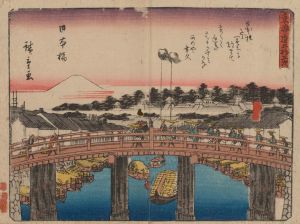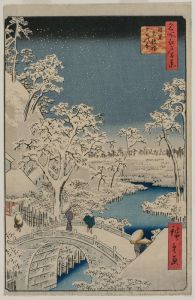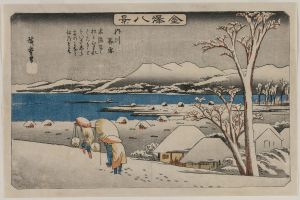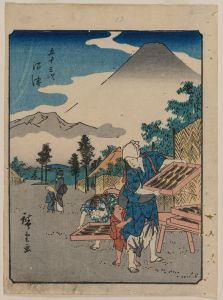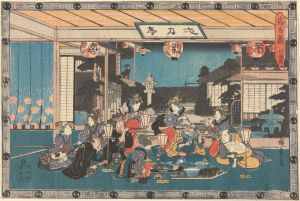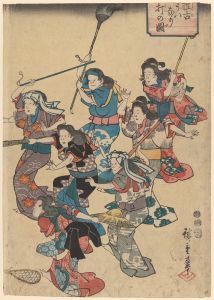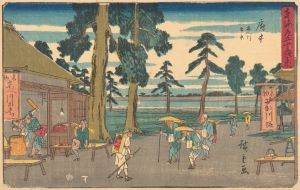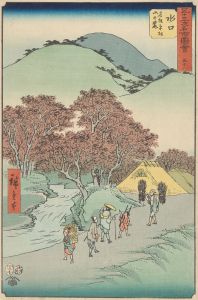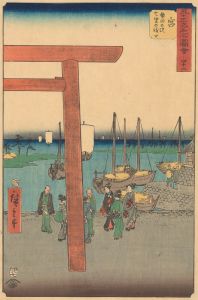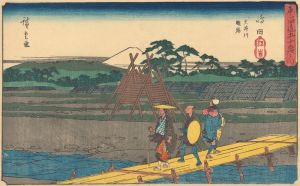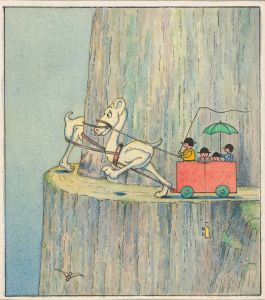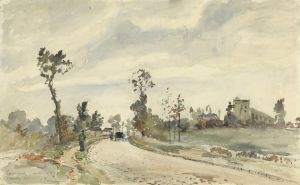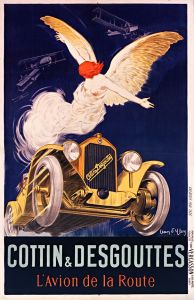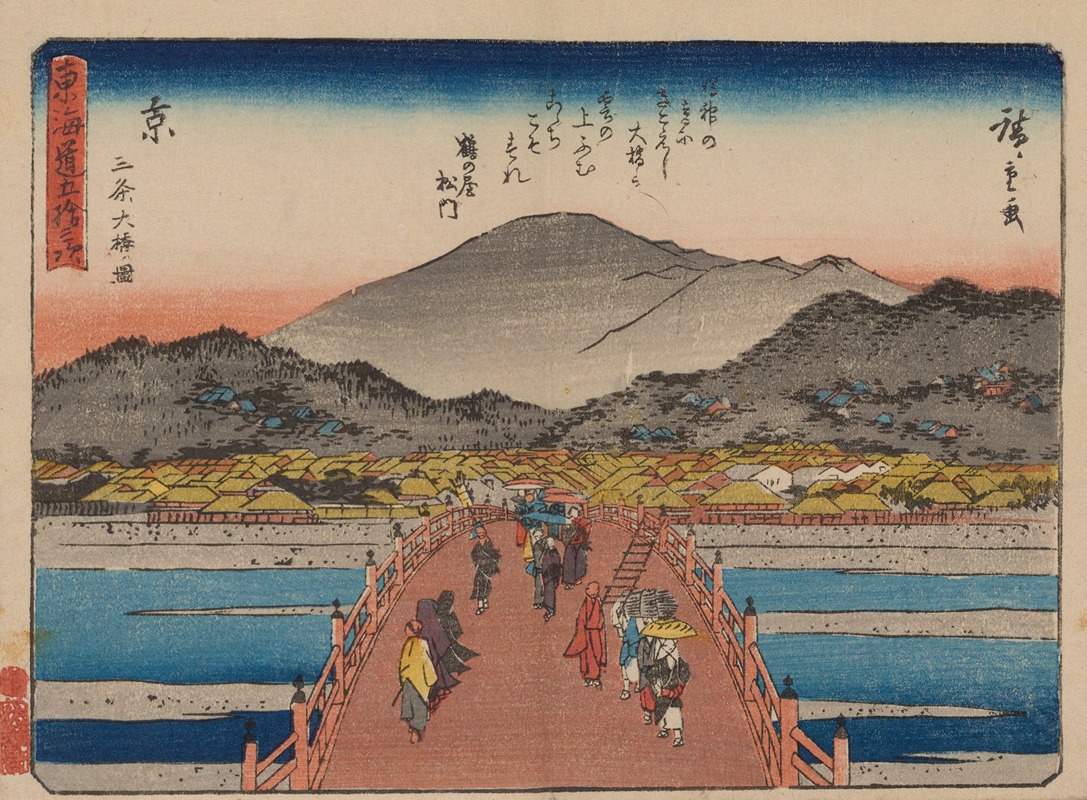
Tokaido gojusantsugi, Pl.55
A hand-painted replica of Andō Hiroshige’s masterpiece Tokaido gojusantsugi, Pl.55, meticulously crafted by professional artists to capture the true essence of the original. Each piece is created with museum-quality canvas and rare mineral pigments, carefully painted by experienced artists with delicate brushstrokes and rich, layered colors to perfectly recreate the texture of the original artwork. Unlike machine-printed reproductions, this hand-painted version brings the painting to life, infused with the artist’s emotions and skill in every stroke. Whether for personal collection or home decoration, it instantly elevates the artistic atmosphere of any space.
Andō Hiroshige, a renowned Japanese ukiyo-e artist of the Edo period, is celebrated for his landscape prints and his series "The Fifty-three Stations of the Tōkaidō" (Tōkaidō gojūsan-tsugi). This series, created in the early 1830s, is one of Hiroshige's most famous works and consists of 55 woodblock prints, each depicting one of the post stations along the Tōkaidō road, which was the main travel route connecting Edo (modern-day Tokyo) to Kyoto.
The print "Tokaido gojusantsugi, Pl.55" is the final piece in this series, representing the last station, which is the Nihonbashi in Edo. Nihonbashi, meaning "Japan Bridge," was a significant landmark in Edo and served as the starting point for the Tōkaidō road. This location was not only a bustling commercial hub but also a symbol of the city's prosperity and the center of Japan's road network during the Edo period.
Hiroshige's depiction of Nihonbashi captures the vibrancy and activity of the area. The print typically illustrates a lively scene with merchants, travelers, and locals going about their daily activities. The bridge itself is a prominent feature, often shown with people crossing it, and the background may include views of Edo Castle or Mount Fuji, depending on the specific version of the print. Hiroshige's use of perspective and his attention to detail bring the scene to life, providing a glimpse into the daily life of Edo-period Japan.
The "Fifty-three Stations of the Tōkaidō" series was groundbreaking for its time, as it combined elements of traditional Japanese art with new techniques and perspectives influenced by Western art. Hiroshige's innovative use of color, composition, and atmospheric effects helped to popularize the landscape genre in ukiyo-e and had a lasting impact on both Japanese and Western art. His work influenced many Western artists, including the Impressionists, who admired his ability to capture the fleeting beauty of nature and the human experience.
Hiroshige's prints were widely distributed and became popular souvenirs for travelers along the Tōkaidō road. They not only served as artistic representations of the journey but also as practical guides, highlighting the unique characteristics and attractions of each station. The series remains a valuable historical record of the Tōkaidō road and the cultural and social dynamics of the Edo period.
In summary, "Tokaido gojusantsugi, Pl.55" by Andō Hiroshige is a significant work within the "Fifty-three Stations of the Tōkaidō" series, capturing the essence of Nihonbashi and the bustling life of Edo. Hiroshige's masterful depiction of this iconic location reflects his skill in portraying landscapes and his ability to convey the spirit of the time, making it a cherished piece of Japanese art history.





